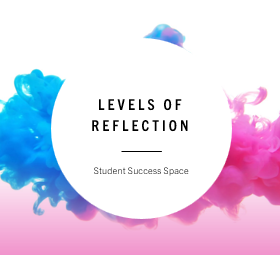Hatton and Smith in 1995 developed a theory or methodology for levels of learning and reflection. This methodology has become one of the most well known frameworks in the use of reflection. They proposed that when individuals engaged with others through questioning and conversation that the reflective process was further developed. Of course, writing is an essential component to this process.
Through these levels of reflection, students are encouraged to criticize and evaluate their beliefs and ideas, even their actions.
Hatton and Smith created a tool to gauge the learning experience and the reflective process.
Level One: Descriptive Writing
In this stage, writing does not show any reflection. It is merely a record of the learning event. It will be fact based. More passive based learning.
Level Two: Descriptive Reflection
This stage demonstrates more descriptive writing. It will include information or insights from varying viewpoints instead of one viewpoint. More active than passive.
Level Three: Dialogic Reflection
This is the point where the learner steps back from the learning experience and does more exploring of the learning experience. The learner will acknowledge that other points of views exist and that other explanations may exist. More analysis occurs at this stage.
Level Four: Critical Reflection
This is the pinnacle of the reflective practice. The learner will acknowledge the many different perspectives. The learner will also evaluate these perspectives and even rank them within their value to the situation. Other historical, social and political implications may be concerned.
How to develop reflective practice:
- Any active learning event – especially hands-on event
- Integrated different learning personality methodologies
- Case studies
- Set a learning goal
- Create a scrapbook
- Use graphic organizers
- Develop a system for a learning journal using reflective practice
- Use real-world experiences
- Summarize
- Story board
- Use self-assessment – introduce your learners to the levels of reflection. Encourage them to grade themselves.


Comments are closed